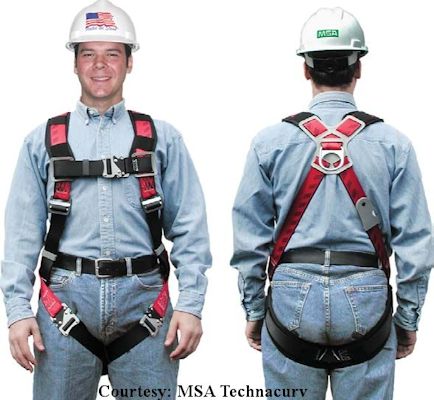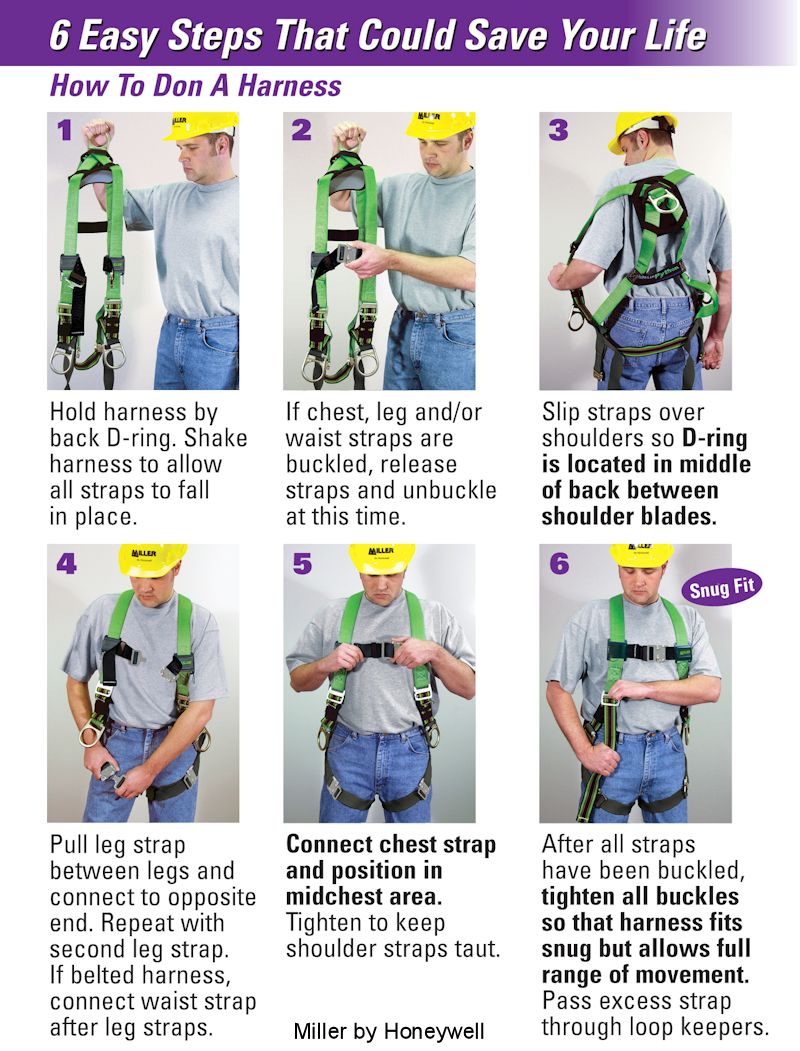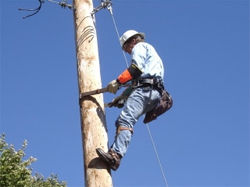Personal Fall-Arrest Systems (PFAS)
Body Harness
Body harnesses are designed to minimize stress forces on an employee's body in the event of a fall, while providing sufficient freedom of movement to allow work to be performed.
Harnesses, and components must be used only for employee protection (as part of a personal fall arrest system) and not to hoist materials.
Keep the following in mind:
- The harness must be made from synthetic fibers.
- The harness must fit the user. It should be comfortable and easy to adjust.
- The harness must have an attachment point, usually a D-ring, in the center of the back at about shoulder level. Under the new ANSI Z359 standard, a D-ring may also be used in the front of the harness. However, connection at the front D-ring is limited to systems that restrict free fall distance to 2 ft or less and limit the maximum fall arrest loads on the front D-ring to 900 lbs of force or less. The D-ring should be large enough to easily accept a lanyard snap hook.
- Chest straps should be easy to adjust and strong enough to withstand a fall without breaking.
- Use only industrial full-body harnesses (not recreational climbing harnesses).
- The harness must be safe and reliable. It should meet ANSI and CSA standards and the manufacturer should have ISO 9001 certification, which shows the manufacturer meets international standards for product design, development, production, installation, and service.
Body Belts
Body belts are used for positioning only and consists of a body belt and pole strap used by overhead line workers on poles and towers. This equipment keeps line workers from falling, while allowing their hands to be free to perform work.
Line workers who have been trained and have demonstrated proficiency in climbing are considered "qualified climbers" and do not need to use fall protection equipment when ascending, descending, or changing positions on poles or towers unless there are conditions that could cause workers to lose their grip or footing.
Conditions that may necessitate "qualified climbers" needing to use fall protection equipment when ascending, descending, or changing positions can include bad weather (high winds, ice, or snow) or certain configurations of the structure being climbed. In such cases, a fall arrest system must be used at all times.
Knowledge Check Choose the best answer for the question.
5-4. What must a body harness be made of?
You forgot to answer the question!



